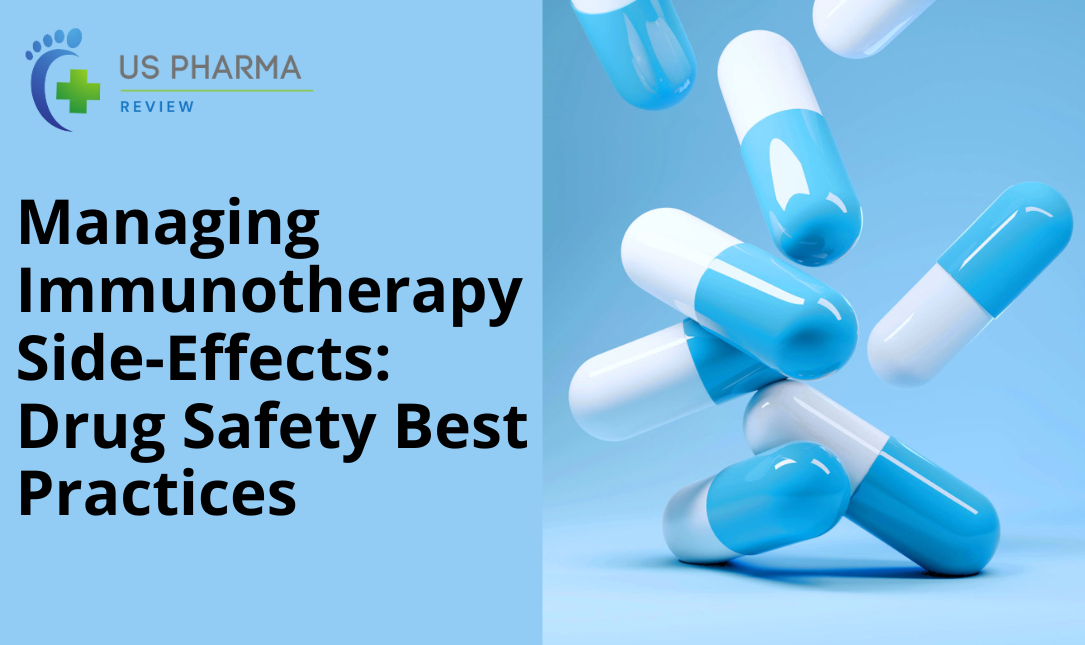Travel Tips
Lorem ipsum dolor sit amet, consectetur adipiscing elit.

Immunotherapy has revolutionized cancer treatment, offering hope to patients with previously untreatable malignancies. However, these therapies can lead to complex immunotherapy adverse events that require careful management. Maintaining Drug Safety in this context is crucial to maximize therapeutic benefits while minimizing risks. Oncology healthcare providers must implement stringent safety monitoring oncology drugs protocols to ensure patient well-being and treatment efficacy.
In this article, we delve into practical strategies for managing immunotherapy side-effects and maintaining robust Drug Safety practices in clinical settings.
Immunotherapy works by stimulating the patient’s immune system to attack cancer cells. While effective, this stimulation can sometimes trigger immune-related side effects affecting various organs. Common immunotherapy adverse events include:
Dermatologic reactions: Rash, pruritus, and vitiligo
Gastrointestinal issues: Diarrhea, colitis, and nausea
Endocrine disruptions: Thyroid dysfunction, adrenal insufficiency
Pulmonary effects: Pneumonitis
Hepatic complications: Hepatitis and elevated liver enzymes
Understanding the types and severity of these reactions is a cornerstone of Drug Safety. Early recognition allows clinicians to intervene promptly, preventing complications that could compromise patient outcomes.
The administration of biologic therapies, including immunotherapies, demands adherence to well-defined safety protocols biologics. These protocols typically include:
Patient screening and risk assessment: Evaluate pre-existing conditions and potential contraindications.
Baseline laboratory testing: Establish reference points for liver, kidney, and immune function.
Dose adjustments and escalation strategies: Tailor therapy to individual tolerance and risk profiles.
Emergency management plans: Prepare for severe immune reactions such as anaphylaxis or cytokine release syndrome.
By following these protocols, healthcare teams can maintain high standards of Drug Safety while delivering personalized care.
Effective safety monitoring oncology drugs is essential to minimize the risk of adverse events. This process includes:
Regular clinical assessments: Monitor vital signs, organ function, and symptom progression.
Laboratory surveillance: Track blood counts, liver enzymes, and immune markers to detect early signs of toxicity.
Patient education: Inform patients about potential side effects and when to seek medical attention.
Reporting systems: Document adverse events systematically to refine safety protocols.
This proactive monitoring ensures that Drug Safety is not an afterthought but an integral component of cancer care.
Every immunotherapy regimen involves a delicate balance between therapeutic benefit and potential harm. Conducting a thorough risk-benefit immunotherapy assessment is vital to:
Determine whether the potential clinical gains outweigh the likelihood of immunotherapy adverse events
Customize treatment schedules for patients with heightened susceptibility to side effects
Guide discussions with patients about informed consent and expectations
Maintaining this balance strengthens overall Drug Safety and supports ethical, patient-centered care.
Managing adverse events effectively requires a multi-faceted approach:
Early detection: Encourage patients to report symptoms promptly and conduct routine lab checks.
Symptomatic management: Use corticosteroids, antihistamines, or other supportive medications to control side effects.
Treatment interruption or modification: Temporarily pause or adjust doses when serious reactions occur.
Multidisciplinary care: Collaborate with specialists in gastroenterology, endocrinology, and pulmonology for organ-specific toxicities.
Patient education and empowerment: Provide clear instructions on monitoring, hydration, diet, and symptom tracking.
These measures reinforce Drug Safety by minimizing the severity of side effects and maintaining treatment adherence.
Digital tools and electronic health records (EHR) play a significant role in improving Drug Safety for immunotherapy patients. Advantages include:
Automated alerts for abnormal lab results or missed monitoring appointments
Standardized reporting templates for immunotherapy adverse events
Real-time data sharing across care teams to support rapid intervention
Predictive analytics to identify high-risk patients and tailor interventions
By integrating technology into clinical workflows, oncology centers can optimize safety monitoring oncology drugs and ensure consistent adherence to safety protocols biologics.
Another critical dimension of Drug Safety is ensuring that immunotherapy drugs maintain their efficacy and purity from manufacturer to patient. Factors include:
Proper storage and handling of biologics to prevent degradation
Verification of drug authenticity to avoid counterfeit products
Tracking lot numbers and expiration dates for accountability
For a deeper dive into maintaining Drug Safety through supply chain integrity, refer to Supply Chain Integrity and Drug Safety in Pharma.
Education is a cornerstone of effective Drug Safety management. Oncology teams should receive regular training on:
Recognition and management of immunotherapy adverse events
Updates on new safety monitoring oncology drugs protocols
Guidelines for balancing risk-benefit immunotherapy decisions
Similarly, patients benefit from clear communication regarding side effects, self-monitoring, and emergency contacts. Empowering both clinicians and patients strengthens overall treatment safety and outcomes.
As immunotherapy continues to evolve, prioritizing Drug Safety remains paramount. By understanding adverse events, implementing rigorous safety protocols biologics, and leveraging technology for safety monitoring oncology drugs, healthcare providers can mitigate risks and enhance patient outcomes. A balanced risk-benefit immunotherapy assessment ensures therapies are both effective and safe. Ultimately, a culture of vigilance, education, and proactive management fosters optimal Drug Safety in modern oncology.